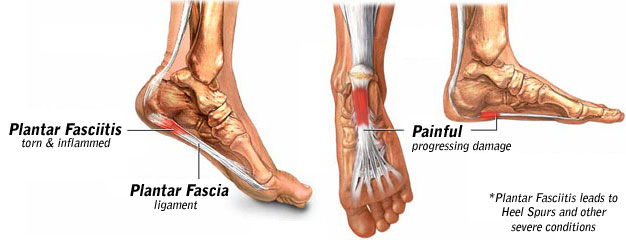|
|
LaserStim.net


Call:

|
StimLase 2000 The StimLase 2000 Deep Low Level Therapeutic Laser FDA Approved for pain relief & healing! INDICATION:Plantar Fasciitis DESCRIPTION: Plantar Fasciitis is a serious, painful, and progressing condition that occurs when the long, flat ligament along the bottom of the foot develops micro-tears and inflammation. In other words, plantar fasciitis is a strain of the plantar ligament. The plantar ligament extends from the five toes and runs along the bottom of the foot, attaching at the heel. When you walk or run, you land on your heel and raise yourself on your toes as you shift your weight to your other foot, causing all your weight to be held up by your plantar ligament. Under certain circumstances, such repetitive force can damage the plantar ligament.  Many factors can cause plantar fasciitis to develop. When walking
with a normal step, the plantar ligament stretches as the foot strikes
the ground. When walking with an abnormal step, or when putting
repetitive pressure on the heel, the plantar ligament can stretch
irregularly, become stressed, and develop small tears. These small tears
can cause the ligaments outer coating, or fascia, to become inflamed
and can lead to serious pain.
The pain from plantar fasciitis is described as being either dull aching or sharp, and it can usually be reproduced by flexing the toes upwards (dorsiflexion) and tensing the ligament. Plantar fasciitis pain tends to be worse after standing or exercising for prolonged periods or after getting out of bed in the morning. Morning heel pain from plantar fasciitis is one of the most common symptoms and occurs because the fascia becomes tense after a protracted rest. As the person walks, the ligament “warms up” and lengthens slightly, reducing the tension on the ligament and lessening pain. TREATMENT Plantar fasciitis has typically been very responsive to Deep Low Level laser Therapy (D3LT) using the Laserstim 1500 system. Treatments should commence as soon as possible. During the first week, 2-3 D3LT treatments are recommended. In very acute cases (often involving elite teenage or adult athletes), a more intense regime of 3 consecutive daily treatments followed by another treatment on day 5 is optimal. During the second week, 2-3 treatments should be done on alternating days. This usually alleviates the condition. When plantar fasciitis lingers into a third or fourth week, only 2 treatments per week are required. When treating plantar fasciitis, D3LT should be accompanied by a diligent progressive stretching program. When practical, strenuous exercise or work affecting the feet should be avoided until the pain subsides for several days. Thereafter a gradual build-up is recommended. In addition, the underlying causes of plantar fasciitis must be addressed to prevent re-occurrence. Preventative measures include:
COMMENTS As stated above, our clinical results treating plantar fasciitis have been consistently excellent. It’s also not unusual that plantar fasciitis patients concurrently develop Achilles tendonitis from attempting to walk more on their toes. In those situations, both areas are treated concurrently. It must be emphasized that D3LT accelerates the natural soft tissue healing process. While plantar fasciitis patients often experience dramatic pain relief in just 2-3 treatment sessions, the treatments should continue for at least two weeks to assure a complete recovery. Likewise, athletes should refrain from competition and training long enough for healing to complete. |
This site is best viewed at 1024X768 resolution. Site optimized for Internet Explorer 7.0 and Firefox 2.0

